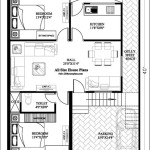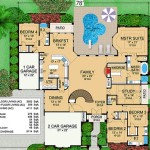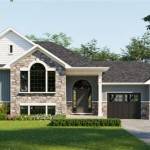Concrete Dome House Plans: A Comprehensive Guide
Concrete dome houses, with their striking spherical forms and unique architectural features, have captivated homeowners and architects alike for decades. These innovative structures offer a plethora of advantages, from enhanced structural integrity to energy efficiency. If you're contemplating building a concrete dome home, it's crucial to understand the essential aspects of concrete dome house plans to make informed decisions.
Types of Concrete Dome Construction
Concrete dome houses can be constructed using various methods, each with its advantages and limitations:
- Monolithic Dome: A single, continuous shell of concrete creates a highly durable and weather-resistant structure.
- Pneumatic Dome: A flexible membrane is inflated under a structure and then sprayed with concrete, resulting in a lightweight and cost-effective alternative.
- Airform Dome: Inflatable forms are covered with wire mesh and sprayed with concrete, providing a smooth, seamless finish.
- Precast Dome: Prefabricated concrete panels are assembled on-site, offering faster construction but potentially less flexibility.
Design Considerations
Concrete dome house plans require careful consideration of several design elements:
- Dome Size and Shape: The diameter and height of the dome determine the interior space and floor plan flexibility.
- Windows and Doors: Strategic placement of windows and doors ensures natural light, ventilation, and access to the outside.
- Interior Layout: The dome's spherical shape allows for innovative floor plans and efficient use of space.
- Energy Efficiency: Proper insulation, natural ventilation, and thermal mass design can minimize energy consumption.
- Structural Stability: Concrete domes are inherently strong, but proper reinforcement and design are essential to withstand seismic and wind forces.
Cost Factors
The cost of building a concrete dome house depends on several factors, including:
- Materials: The type of concrete, reinforcement, and insulation used will impact the overall cost.
- Size and Complexity: Larger and more complex domes will require more materials and labor.
- Labor: Labor costs can vary depending on the construction method and geographic location.
- Site Conditions: Preparing the building site, including excavation and grading, can add to the cost.
Advantages of Concrete Dome Houses
Concrete dome houses offer numerous advantages, including:
- Structural Integrity: Their spherical shape provides exceptional strength and resistance to high winds, earthquakes, and other natural disasters.
- Energy Efficiency: The thick concrete walls and efficient thermal mass design can minimize heating and cooling costs.
- Durable and Fire-Resistant: Concrete is highly resistant to fire, rot, and pests, ensuring a long-lasting and safe home.
- Unique and Aesthetic: The spherical shape and smooth contours create a striking and visually appealing architectural statement.
- Versatile Design: Dome houses allow for innovative and flexible floor plans to accommodate various lifestyles and needs.
Conclusion
Concrete dome house plans present a unique and innovative approach to home design. By considering the various construction methods, design considerations, cost factors, and advantages, homeowners can make informed decisions to create a sustainable, energy-efficient, and visually captivating living space. While concrete dome houses offer numerous benefits, it's essential to consult with experienced professionals to ensure proper planning and execution.

Monolithic Dome Home Floor Plans Institute

Monolithic Dome Home Floor Plans Institute

Monolithic Dome Home Floor Plans Institute

Monolithic Dome Home Plans Ayanahouse Homes House Floor

Monolithic Dome Homes Org

Monolithic Dome Home Floor Plans Institute

Word Picture The First Step In Designing Your Own Dome Home Monolithic Institute

Real Working Drawings Monolithic Dome

Monolithic Dome Home Floor Plans Institute

Monolithic Dome Home Floor Plans Institute








